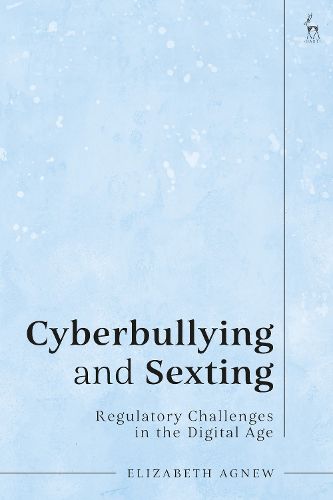Readings Newsletter
Become a Readings Member to make your shopping experience even easier.
Sign in or sign up for free!
You’re not far away from qualifying for FREE standard shipping within Australia
You’ve qualified for FREE standard shipping within Australia
The cart is loading…






Drawing on two empirical studies and influential theoretical frameworks, this book provides a critical overview of the key regulatory challenges concerning cyberbullying and sexting behaviours among young people (persons under 18 years).
The author explores issues such as conceptualising the behaviours, examining the prevailing presence of sexism, myths and stereotypes surrounding gender roles and identity, and the limitations of criminal law as an effective regulatory tool. In doing so, identifying peer-based sexting behaviours as part of a continuum of sexual behaviour is promoted alongside the need to consider interventions beyond the legal landscape and in line with the United Nations Convention on the Rights of the Child. In the main, priority is given to non-legal responses and the need for more effective and comprehensive gender-sensitive education programmes. The book therefore provides a more developed conceptual understanding of sexting and cyberbullying behaviours among young people.
$9.00 standard shipping within Australia
FREE standard shipping within Australia for orders over $100.00
Express & International shipping calculated at checkout
Drawing on two empirical studies and influential theoretical frameworks, this book provides a critical overview of the key regulatory challenges concerning cyberbullying and sexting behaviours among young people (persons under 18 years).
The author explores issues such as conceptualising the behaviours, examining the prevailing presence of sexism, myths and stereotypes surrounding gender roles and identity, and the limitations of criminal law as an effective regulatory tool. In doing so, identifying peer-based sexting behaviours as part of a continuum of sexual behaviour is promoted alongside the need to consider interventions beyond the legal landscape and in line with the United Nations Convention on the Rights of the Child. In the main, priority is given to non-legal responses and the need for more effective and comprehensive gender-sensitive education programmes. The book therefore provides a more developed conceptual understanding of sexting and cyberbullying behaviours among young people.